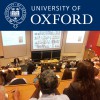The Higgs Boson and Particle Physics at the LHC: a Progress Report and Plans for the Future
The QCD axion was proposed more than thirty years ago to explain the smallness of the electric dipole moment of the neutron and has been looked for ever since. It is an excellent dark matter candidate and its size is significantly larger compared to the elementary particles of the Standard Model: it can easily vary from tens of microns to thousands of kilometers. When its size is similar to that of astrophysical black holes, it binds to them forming a gravitational atom in the sky. The number of axions occupying the levels of this gravitational atom can grow exponentially around rapidly rotating black holes through an effect that is known as super-radiance. This growth slows the black hole down and a Bose Einstein Condensate of axions is formed orbiting the black hole. Just like a laser, this BEC emits gravitational waves as axions can annihilate or transition to different levels of this gravitational atom. These gravitational waves fall within the frequency range of the upcoming Advanced LIGO experiment. Through super-radiance, black holes are thus turned into cosmic particle detectors through the only universal force: gravity.




